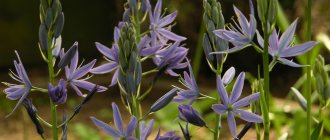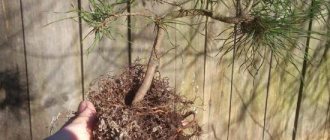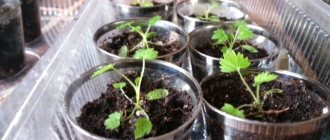It turns out that the proximity of some plants to garlic can protect the former from pests and diseases and increase yields. But not every crop will like to grow next to this fragrant vegetable.
Garlic has long been known for its fungicidal and antibacterial properties. But he helps not only people. Garden plants also experience the beneficial effects of phytoncides secreted by vegetables - active substances that suppress the growth of pathogenic microflora and repel pests.
Research in this area is still ongoing, but there are already many facts confirming the benefits of garlic in mixed plantings. This way you can solve two problems at once: save the area of land for growing crops and reduce the use of chemicals against pests and diseases.
But garlic does not have to be planted in a bed with other plants. It often exhibits its protective properties even when planted in a neighboring bed. You can also plant garlic between the rows. Choose the method of planting spring or winter garlic that is most suitable for your site.
In rare cases, when mixed plantings with other crops, garlic does not produce a large yield. Therefore, if you want to grow a lot of this vegetable, give it a separate bed and provide it with individual care.
Is it possible to plant tomatoes next to garlic?
Tomatoes will really like the proximity to garlic. It will protect plants from aphids, spider mites and whiteflies, and reduce the activity of late blight and rust. And tomato bushes, in turn, will reduce the likelihood of garlic becoming infected with scab. It is best to place the garlic bed at a distance of at least half a meter from the tomato bed. You can plant garlic next to tomatoes both in a greenhouse and in open ground.
Planting garlic next to tomatoes gives a nice bonus: the garlic heads will grow larger than usual.
Raspberries of other varieties
Raspberry bushes contain bisexual flowers, so there is no need for cross-pollination with other varieties. There are also no negative neighborhood factors. Raspberries cannot, for example, cross-pollinate, because... even if pollination of different varieties has occurred, the result will only be visible on a seedling grown from a raspberry seed. But raspberries are grown from seeds, much less their own, by only a few, and maybe no one at all.
Is it possible to plant garlic next to cabbage?
Experienced summer residents have long practiced planting cabbage and garlic together, usually spring. Garlic reliably protects heads of cabbage from various pests: aphids, cruciferous flea beetles, caterpillars. It also improves plant immunity. In mixed planting, garlic is planted first, and after germination, cabbage. Since they have different root systems, the crops do not compete for nutrition in the soil, but be prepared for the fact that the garlic heads will not grow too large.
To enhance the release of phytoncides, we recommend slightly trimming the garlic arrows once a week.
Currant
Raspberries get along well with currants, and you can plant crops nearby. Many sources indicate that the neighborhood is undesirable, because The raspberry root system grows quickly and begins to oppress the currant bushes. In principle, this statement is true, but it relates more to the characteristics of raspberries, and not specifically to currants. With the same force, raspberries will inhibit any other shrub or vegetable crop. Many gardeners grow currants, raspberries, and gooseberries nearby and do not express any negative feedback. It is necessary to promptly remove excess growth and fertilize the plantings so that all plants have enough nutrients.
Is it possible to sow carrots next to garlic?
Yes, you can, because such a neighborhood will benefit both vegetables. Thanks to the effects of phytoncides, carrots will not suffer from carrot flies, aphids and psyllids. This is especially important at the stage of root crop development. Also, the resulting harvest will be stored longer. It is best to place the garlic bed next to the carrot bed. If this is not possible, planting garlic between rows or mixed planting will help out.
- Who eats the harvest? 3 most dangerous pests of carrots
Signs of pest infestation, effective ways to combat them and preventive measures.
Interestingly, carrots also help garlic grow healthy. The substances it secretes allow winter garlic to preserve green, juicy tops longer. As a result, both crops can be harvested almost simultaneously. At the same time, the garlic heads grow larger and are stored well. Another plus: you can plant carrots and garlic together before winter.
Garlic is also useful for other root vegetables. Planted next to beets, it will repel beet flies and slugs. But in general, beets prefer proximity to tomatoes or spinach.
Plants that repel pests
Raspberries are one of those plants that often suffer from insect pests, so the gardener will have to make every effort to protect the future harvest. A radical solution to the problem is the use of insecticidal chemicals, but if you need environmentally friendly berries, then it is worth studying the issue of beneficial crop compatibility in this regard.
It is best to plant raspberry bushes next to aromatic plants that can repel pests . For example, they will grow well next to red elderberry, the smell of whose berries is clearly noticeable within a radius of several meters from the plantings. Marigolds, garlic, ferns, coriander and celery have also proven themselves well , often found not only next to raspberries, but also near blackberries or strawberries.
Plants that are compatible with each other mutually support each other throughout the entire period of growth and development, therefore, if you have not yet planted raspberries on your site, the issue of proper proximity should be given increased attention. Combined with responsible further care, this action will help achieve maximum yield and protect you from unnecessary problems.
Is it possible to plant garlic next to strawberries (garden strawberries)?
There are legends about the “friendship” of garlic and garden strawberries. These crops are considered one of the best candidates for mixed plantings. Although some summer residents believe that it is still more effective to plant garlic in an adjacent bed or between rows. In any case, phytoncides will have a beneficial effect on garden strawberries: slugs, spider mites, May beetle larvae and other pests will disappear, and the incidence of gray rot will decrease.
Sometimes proximity to garlic makes garden strawberries healthy and strong, but, alas, low-yielding. To solve this problem, you can plant strawberries after garlic, and vice versa. This crop rotation is very effective and allows you to get a rich harvest of both berries and garlic heads.
What to plant raspberries next to to improve their yield
For the growth and fruiting of raspberries, sufficient access to sun and moisture is important, but first of all, fertilized soil. In addition to applied fertilizers, some types of plants are capable of releasing useful substances into the soil. Certain crops suppress the spread of weeds throughout the area that can take away nutrition from raspberries.
Plants that have a positive effect on the productivity and health of raspberry bushes include:
- legumes and cereals;
- blackberry;
- honeysuckle;
- tomatoes;
- fruit trees: apple, pear, plum;
- dill;
- juniper;
- rose;
- barberry.
It has been proven that beans and cereals fill the soil with nitrogen compounds, which have a positive effect on the growth and quantity of raspberry crops. The soil underneath becomes much more nutritious and looser, which facilitates better penetration of moisture, which is extremely important for berry bushes. It is better to plant in raspberry rows, which will contribute to the absence of weeds.
Plants with a pleasant and distinct aroma attract insects that pollinate raspberries to the site. Their presence near bushes increases the amount of future harvest.
Is it possible to plant flowers next to garlic?
If you see arrows of spring or winter garlic in some flowerbed, do not be surprised. The fact is that it perfectly protects flowers from fungal diseases (downy mildew, gray rot, etc.), repels aphids, thrips and other pests. Plant some garlic next to roses, carnations, tulips and other bulbs to strengthen the plant's immunity.
Calendula, in turn, will protect garlic from onion flies.
What not to plant next to garlic
Not all plants will agree to live next to garlic and regularly receive phytoncidal protection from it. Legumes (beans, peas, etc.) will react worst to this. They will have few flowers and ovaries, and the harvest itself is unlikely to amaze the imagination. So choose beds for these plants away from garlic.
Friendship: with whom and against whom?
Garlic repels insect pests.
Many plants have the ability to repel insect pests and even protect against diseases.
- For example, calendula successfully fights raspberry fly . Spicy herbs (garlic, parsley, marjoram, basil) and flowering plants with a specific aroma (marigold, yarrow, tansy, chamomile) release volatile substances into the air that interrupt the smell of the “breadwinner” plant for pests. Not feeling it in this place, the insect flies to another territory.
- Undeservedly expelled from the site , nettle, getting along well with raspberries , also reduces the number of insects attacking tender juicy berries.
- of red elderberry growing nearby will also play the role of a guard .
Predecessors of garlic
You cannot plant garlic in the same place where it grew last year, as well as in the place where onions were planted last year, because these are relatives.
It is better to choose places where grains and legumes grew. They saturate the soil with all the necessary nutrients for garlic. Due to this, it is possible to achieve a high yield, and the fruits themselves will be very large.
Crops that are not desirable as a precursor to garlic are carrots, turnips, radishes, mint and coriander. Also, you shouldn’t plant lettuce after garlic, although if you plant it next to lettuce, it’s a wonderful neighborhood.
Garlic will be large if you plant it after vegetables such as potatoes, cucumbers, squash, cabbage and pumpkin have grown in the garden.
Raspberries: properties, growth characteristics
Common raspberries are found in almost any part of the Russian Federation. This deciduous shrub has a perennial rhizome, from which biennial aboveground stems emerge, reaching one and a half meters in height. The root system is sinuous, woody, with a large number of adventitious roots, which form a branched system.
All stems are erect, with oval, alternately arranged leaf blades of a dark green color and slight pubescence on the surface. During flowering, the shrub is decorated with small white flowers, collected in racemose inflorescences, located mainly at the top of the stems or in the axils of the leaves.
STRUCTURE OF A RASPBERRY BUSH AND INDIVIDUAL ORGANS OF THE PLANT: 1 - offspring; 2 - adventitious roots; 3 - buds on the rhizome and root; 4 - replacement shoot; 5 - fruiting stem; 6 - rhizome; 7 - overgrowing roots; 8- side branch; 9 - bud; 10 - flower; 11- node; 12 - internode; 13 - sheet; 14 - main kidney; 15 - additional kidney; 16 - core; 17 - wood; 18 - bark; 19 — spikes; 20 - covering scales; 21 - embryonic leaves; 22 - embryonic inflorescence; 23 - axillary bud
When it comes to using raspberries, you can use almost any part of them.
- Both the fruits, the leaves, and the shoots themselves have a lot of useful properties, the main ones among which are the following:
- antitoxic effect;
- antipyretic effect;
- antibacterial and antifungal effects, which is especially important when there are staphylococci and other similar fungi in the body;
- diaphoretic effect;
- normalization of the condition in hypertension, gastrointestinal diseases, anemia.
Often, decoctions and infusions from the plant are used as an expectorant for laryngitis, tracheitis, bronchitis and common viral ailments. Sometimes the culture is used as a sedative for nervous disorders and depression. In this case, its effectiveness is explained by the presence of a large amount of copper in the composition.
Corn, grapes and sea buckthorn: characteristics of each “neighbor”
Like the previous plant, corn can keep raspberry plantings from spreading excessively throughout the area without causing serious harm to existing bushes. The only thing that can harm the cereal crop in this case is to protect the raspberries from the sun's rays, which will negatively affect the size and taste of the future berry harvest.
Neighborhood with grapes and sea buckthorn is more undesirable for raspberries , since the rhizomes of all three plants are at approximately the same level and will compete for nutrients and moisture in the soil. Since sea buckthorn is stronger in development, it is likely that all the bushes of the latter will begin to lag in growth and will soon completely wither away.
How to prevent raspberry overgrowth
If, during planting, the raspberry tree along the perimeter was not limited by underground fences made of slate or sheet metal, then inevitably every gardener will face the problem of raspberry tree growth. And the more diligently the raspberry growth is removed, the more actively it grows, filling everything around.
In this situation, a well-known agrotechnical technique will come to the rescue, allowing you to control and manage the growth of raspberry bushes. By planting some types of plants along the raspberry plantings, you can prevent its growth. These include:
1. Sorrel is a herbaceous perennial, undemanding in care, preferring fertile loamy soils. Tannins and acids contained in the root system of the plant have a restraining effect on the raspberry root system. Thus, sorrel sown along the raspberry tree in 2-3 rows will help control its growth.
2. Beans - grain or asparagus. The root system of this vegetable releases substances into the soil that inhibit the growth of raspberries. Beans - for this it is more convenient to use bush forms - should be planted around the perimeter of the raspberry field, thus creating a protective green fence.
Sorrel, thanks to the tannins it contains, inhibits the growth of raspberries
3. Metlitsa is an annual weed with a highly branched root that can have a restraining effect on raspberry plantings. Easily growing between raspberry rows, broom brings additional benefits by covering the soil and thereby preventing the evaporation of moisture from it.
Attention! Metlitsa, although it is a weed, has been in great demand recently in landscape design - it is often used as lawn grass.
Friendly plants
When planting different crops on the same row, it is necessary to take into account the soil structure, watering regime, age of the bushes and plant compatibility. The ripening of vines is well influenced by cereals and herbaceous plants. Rye, wheat, and oats will be beneficial for grapes. You can plant quinoa and woodlice, they won’t hurt.
If you plant grapes with berries, they will acquire a specific taste. The best way to reflect the proximity to strawberries. Then the bunches will be well candied and become larger.
Onions and garlic are excellent neighbors for any vineyard. They will be able to protect the bushes from pests. But some varieties of onions can be harmful to young bushes.
Varieties of radishes, beets and cucumbers grow well between the rows of grapes. Dill and spinach are also grape friendly. Sowing legumes will enrich the soil with nitrogen. Some flowers will be useful for grapes. Plantings of currants and raspberries will take root between the rows of grapes. Caring for currants can be combined with pruning grapes in the fall.
Ezhemalina - a hybrid of raspberries and blackberries
- Varieties
- Growing and care
- Ezhemalina is a hybrid of raspberries and blackberries. It is often called the word “tayberry”, but this is not entirely true. Tiberi is the most popular variety of raspberry.
This is a relatively new berry crop for Russia, although in fact the first hybrids of blackberries and raspberries appeared in the USA back in the 19th century, and in Russia in the 1930s. They were bred to increase drought resistance, winter hardiness and yield of raspberries, while maintaining their excellent taste. Such productive, unpretentious and tasty hybrids did not appear immediately: past breeders often failed. However, one hundred and thirty years is a long time: today there are excellent varieties of raspberries, seedlings of which can be bought in Russia.
Varieties of raspberries
Taybery
This is the most popular variety. Obtained as a result of crossing the blackberry Morus nigra and the common raspberry Rubus idaeus. The variety was patented by Derek L. Jennings Dundee and released by the Scottish Horticultural Research Institute. Named after the River Tay, which flows in Scotland.
Description and reviews
Vigorous shrub with long creeping stems. The berries are large, dark red in color with a violet tint, elongated in shape, up to 4 cm long. The taste is excellent, the aroma is strong and tart. The berries are difficult to separate: this cannot be done by machine, and therefore Taybury raspberries are not used in large agricultural enterprises.
Taybury seedlings are easy to buy in Russia and Ukraine, and the prices are quite affordable. Before transplanting, it is recommended to keep seedlings at a temperature of 0 to 2 degrees.
With fruit and berry crops
Let's consider several of the most possible options for the neighborhood of raspberries with other inhabitants of the garden:
- Blackberry . Good partnership. It makes similar demands on environmental conditions, which greatly facilitates the care of plantings. Contrary to popular belief, crops do not cross-pollinate with each other, so you will not get hybrids from such a neighborhood. To prevent the shoots and roots of growing bushes from intertwining, raspberries and blackberries are planted at a distance of 2 m from each other or limiters in the form of tin or slate sheets are dug between them.
- Apple tree . A reliable friend and companion of the berry bush. Protects raspberries from gray rot, and it saves the neighbor from scab infection. But! Growing raspberries and apple trees in the neighborhood is allowed only if the fruit tree is young. As the apple tree grows older, it gradually begins to displace its weaker companion from its territory.
- Grape . In the inter-rows of this berry crop, many gardeners grow young raspberry cuttings, which is quite justified: in the fertile microclimate of the vineyard, young plants quickly take root and develop well. However, adult bushes of both crops will shade and “eat” each other, and raspberries will most likely lose in the competition for water and nutrition.
- Strawberry . An unsuitable neighbor for raspberries. The suction roots of both crops lie at the same level, so competition is inevitable. In addition, both strawberries and raspberries suffer greatly from a common pest - the raspberry-strawberry weevil.
- Cherry . Refers to the unfortunate neighbors of raspberries. Its powerful roots will oppress the berry bush and over time “strangle” it.
- Walnut . Known to gardeners as the worst antagonist of all cultivated plants. The substances released by its roots accumulate in the soil and inhibit the development of neighboring crops. Needless to say, raspberries planted near this giant have no chance of full growth and high-quality fruiting.
- Currant . Some gardeners consider it too weak a companion for raspberries. The latter, indeed, grows too quickly and actively absorbs nutrients from the soil. However, with timely removal of root shoots and proper application of fertilizers, raspberries and currants coexist peacefully in the neighborhood.
Now about growing different varieties of crops in one area. Have you ever heard about cross-pollination of raspberries and the subsequent deterioration of varietal qualities? Don't believe it, this is a horror story for beginners. Bisexual flowers bloom on raspberry branches, which means the bush does not need a pollinator plant . Even if suddenly pollen from one specimen gets onto another, a slight change in characteristics can only be noticed during generative propagation, and growing raspberries from seeds in amateur gardening is not accepted (long and troublesome).
Additional recommendations
The weed grass plant broom restricts the growth of raspberry roots. This feature is used by experienced gardeners; the weed is planted around the perimeter of the site. But planting grass between the rows can have a positive effect on the raspberry tree, helping moisture stay in the soil longer, nourishing the bushes.
To contain raspberry roots, the method of digging slate and car tires along the border of the site is used. The technique can harm the rhizomes, ruining the bush. Replacing insulating materials with plants that limit underground and above-ground growth of the crop is safer.
The raspberry tree gets along with many fruit trees if you adhere to the norms of the distance between them. The exception is the cherry tree, whose roots grow at the same level as those of shrubs. Over time, raspberries begin to bear fruit worse, weaken, and may die.
If raspberries border on related shrubs, but with different varieties, it is recommended to place species with early and late periods of berry ripening separately from each other. This reduces the frequency of stay near the plant and the risk of shedding unripe fruits and breaking branches.
It is important to remember that raspberries themselves act as an aggressor towards many garden and vegetable representatives. To prevent the roots of shrubs from taking over undesirable areas, experienced gardeners plant sorrel (line width from 50 cm), which has pronounced acidity, around the perimeter. Corn, garlic, and sea buckthorn fulfill this role.
When answering the question of what you can plant raspberries next to, knowledge regarding the root system of plants is required. Stronger representatives blunt the growth and fruiting of raspberry bushes, depriving some of the water and nutrients in the soil. Other crops can help the raspberry plant by saturating the soil with microelements, loosening the soil, protecting it from pests, diseases, and weeds.
Principles for selecting plants when planting
Choosing neighbors for plants is not difficult, you just need to know what to consider.
Ideal neighbors:
- They don't fight for sunlight.
- Not competitors for nutrient extraction.
- Similar in agricultural technology.
- They do not become a breeding ground and do not attract common diseases and pests.
- They do not emit phytoncides that inhibit plants in the nearest garden bed or flower bed.
These five points are universal and, by applying them to the environment, there will always be a suitable place in the garden for the berry grower.
Let's look at how to act using examples.
Loss of varietal characteristics
The varietal characteristics of this crop may be lost over time, even with proper planting. There are certain reasons for this. Every year the raspberries get worse. The bushes become sparser, the berries grow small, and they no longer have such a pronounced taste.
The most common reason for this is lack of nutrients. After all, as a rule, raspberries are planted in the place that remains after planting other crops. Some summer residents provide minimal care for the bushes and do not fertilize the soil. But this crop requires constant feeding. Only in this case will the bushes remain in good condition for a long time and produce a high harvest every year. If the land is depleted, the bushes will thin out, and the harvest will be meager, the berries will be small and not very sweet.
If you want to get a good harvest of these aromatic berries, apply organic fertilizers to the bushes every year in the fall. And with the onset of spring - complex fertilizers before the bushes begin to bloom. In addition, raspberries can degenerate as a result of exposure to pests and diseases. Since the bush devotes all its strength to fighting the disease and becomes weakened, it has little strength left to produce a harvest. It is necessary to regularly inspect the raspberry plantings, as well as treat the bushes.
It is also possible that the raspberries that you previously planted on your site died a long time ago. And in its place was a “wild game” that spread from the neighbors.
Strawberries from seeds.
Strawberry seeds should be sown in a box 15 cm deep. To do this, fill it with fertile soil and water it. Bring the box into a room with a temperature of 20 degrees and place two to three strawberry seeds every 2-3 cm and with a distance between rows of four to five cm.
Sprinkle a one to two mm layer of wet sand on top. To create a greenhouse effect, place a plastic bag over the box. And of course, make sure the soil is moist.
With the appearance of the first strawberry shoots, the film should be removed immediately, and when two true leaves appear, the seedlings should be picked. Water strawberries carefully so as not to wash out the roots.
Such strawberries will need to be planted in the garden when the return spring frosts have passed. She is still far from beautiful strawberry bushes, these are still tender sprouts of future powerful strawberry bushes, but with good care they will take root well and quickly grow and there is a possibility that they may bloom in the same season. In the first days after transplanting strawberries into the ground, they need to be shaded and watered in the morning and evening.
Is it possible to plant strawberries and raspberries next to each other?
By themselves, these berry plants do not have a negative effect on each other. But they have a common pest, the raspberry-strawberry weevil. This is a black beetle 2-3 mm in size. With the appearance of buds on raspberries and strawberries, the female pest begins to lay eggs inside. At the same time, she gnaws the stalk, as a result of which the bud droops and falls off.
But the damage caused by the weevil does not end there. In the near future, young beetles emerge from the larvae and cause harm during their flowering period. Now it becomes clear that if raspberry and strawberry plantings are located nearby, then when pests appear in one area of berries, they can easily move to nearby strawberry and raspberry areas.
The peculiarities of wintering and the spread of the pest also do not allow any one plant to be the predecessor of each other. Beetles hibernate and hide under dry leaves, dead plant debris, and clods of soil. And even if you uproot the raspberries or strawberries, removing all the leaves and other plant debris, flower weevils may remain in the ground. Early in the spring they will emerge from wintering and will again harm plants. Strawberry varieties
Regardless of the region, climate and size of their summer cottage, few people refuse to grow raspberries - a tasty, sweet, aromatic berry. Beloved by many, it has been known since childhood as a pleasant remedy for colds. Juicy, healthy raspberries are a real natural storehouse of vitamins, microelements and organic acids necessary for human health.
Raspberries get along well alone.
In order for the fragrant harvest to be generous every year, the berry bush needs to create the right conditions. The fastidious raspberry is demanding of sun, moisture, soil fertility, protection from winds, frost, and waterlogging. Few people think that the health and productivity of this berry garden also largely depend on the companion plants that have settled next to it.











